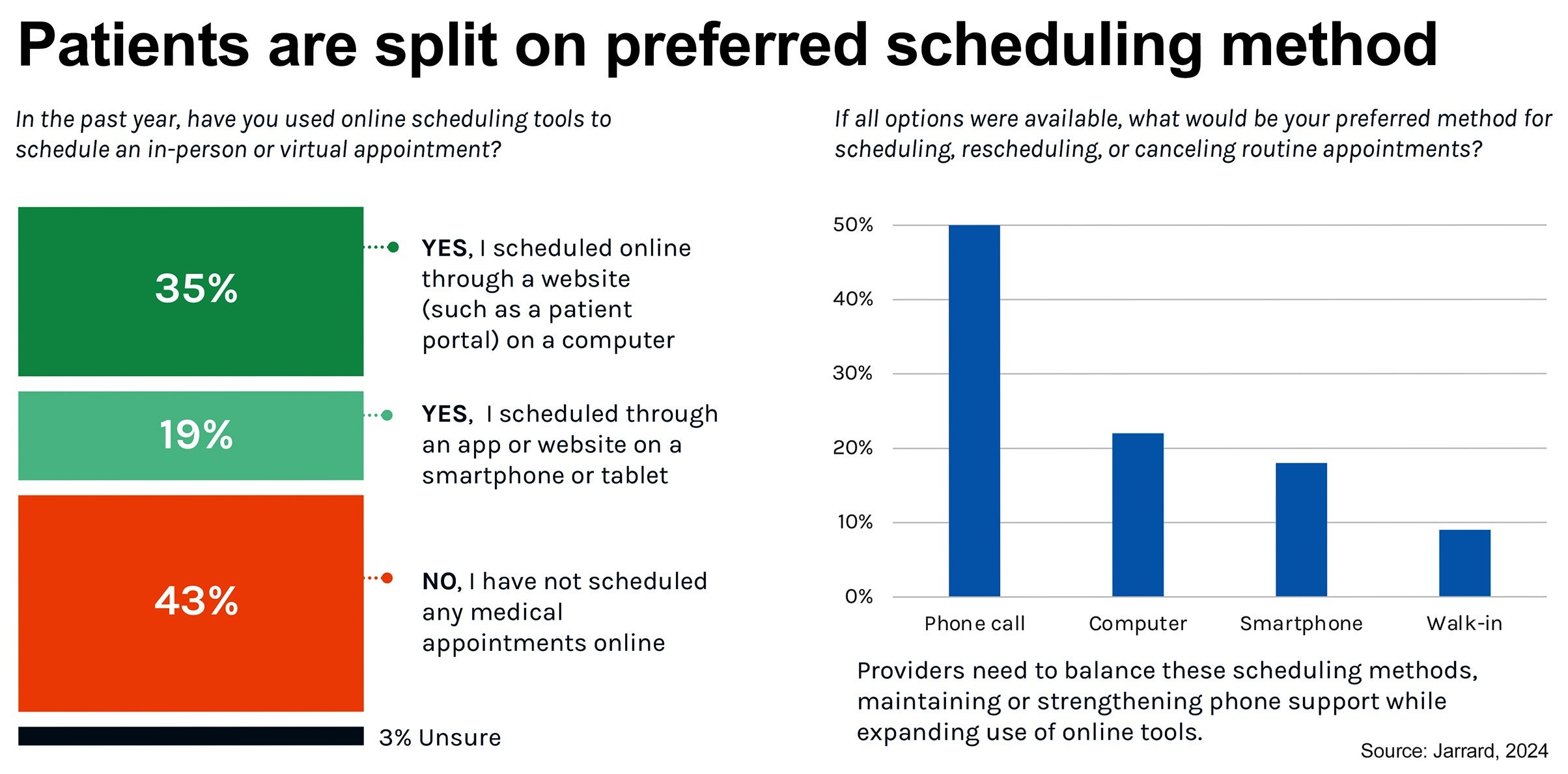

4 Things That Health Consumers Want Now

Satisfying today’s health care consumer is no simple task. Yet, amid the multitude of challenges health care executives face today, none may be more foundational to their organizations’ future growth, reputation and ability to serve and compete in a rapidly changing environment.
The recently released third installment of the 2024 National Consumer Survey Series from Jarrard Inc., a Chartis Company, explores what leads patients to choose providers, how patients want to access care and what they want in their relationship with providers.
The findings and analysis provide insights on how consumers define and assess quality and how executives and marketing/communications leaders can position their organizations locally and within the wider health care landscape.

4 Takeaways from the Survey
1 | Don’t talk past patients on quality matters.
Providers often highlight awards and rankings in their messages to the community even as they simultaneously place a consistent internal focus on quality metrics as defined by the Centers for Medicare & Medicaid Services.
Both are important, but patients have a different view of quality, the report states. To patients, quality is simply a physician who listens to their concerns and a staff that is friendly, caring and provides a clear vision for how to improve their health.
Takeaway
Awards, ratings and the organization’s brand name were at the bottom of the list in how patients view quality. This suggests that highlighting external accolades may be useful within a wider marketing strategy, but it should not be the central focus, notes Pattie Cuen, senior vice president at Jarrard and former health system marketing and communications leader. Instead, emphasize the caring, personal experience patients will have — and back it up with thoughtful operations and staffing.
2 | Insurance acceptance and word of mouth are king in provider selection.
Four out of five respondents said finding a provider who accepts their insurance is “very important” or “important.” About 70% said that a convenient location is important for finding a provider, with slightly more than half giving strong weight to good online ratings and reviews.
Among the 80% of respondents who have an established relationship with a primary care physician (PCP), one-third found them through a trusted friend or family member. Only about one in four found their PCP through a list provided by their insurance plan.
Takeaway
Word of mouth from a trusted source is key to making a final decision, meaning every function and individual within a medical practice or hospital must work to provide an outstanding experience for patients — who then can become an organization’s biggest advocates.
3 | Explain virtual care options.
Just under half the respondents had a virtual care visit within the past two years, and 90% said they were” very satisfied” or “somewhat satisfied” with the experience. But a significant portion of the respondents weren’t clear about their options: 30% said they weren’t sure if their health plan offered virtual care and about one in four didn’t know if their PCP or specialist offered remote options.
Meanwhile, of those who chose not to use virtual care, 55% said it was because they preferred in-person visits with their doctor, reinforcing the personal, relational nature of medical care.
Takeaway
Consider ways to draw more attention to and educate patients about your telehealth services. This will help meet some consumers' desire for more convenient ways to access care.
4 | Meet patients’ scheduling needs.
More than half of respondents have used an app or website to schedule a medical appointment in the last year. Half said that if all options were available (including an app or website), they would prefer scheduling routine appointments by phone.
Takeaway
Providers must continue offering digital and analog scheduling methods, while maintaining or strengthening phone support and expanding the availability of online tools. It is worth considering how to educate and equip patients to become more comfortable with digital scheduling tools. But none of this matters if the patient ends up unable to get a convenient appointment, the analysis states.



